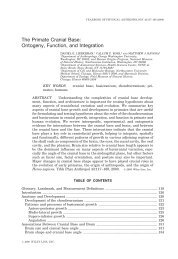Does Social Enterprise Need A New Legal Approach - The Aspen ...
Does Social Enterprise Need A New Legal Approach - The Aspen ...
Does Social Enterprise Need A New Legal Approach - The Aspen ...
You also want an ePaper? Increase the reach of your titles
YUMPU automatically turns print PDFs into web optimized ePapers that Google loves.
Mr. Bromberger also told the conference that he sees room for an entirely new<br />
kind of hybrid company that today’s tax laws aren’t shaped to accommodate. This new<br />
model, he said, would balance business and charity in revolutionary ways beyond any<br />
existing legal framework.<br />
Some of the features that a new type of hybrid company might have, Mr.<br />
Bromberger said: More than a third of its net profit would support its charitable work; the<br />
company could raise capital through stock offerings, but also accept foundation grants<br />
and tax-deductible contributions that would be segregated on the books and used only for<br />
charitable purposes; shareholders would have economic rights, but other stakeholders—<br />
or “members”—would also have certain governance powers; and the company would be<br />
required to issue an annual “<strong>Social</strong> Impact Report” outlining its progress toward<br />
achieving its social mission.<br />
R. Todd Johnson, a Silicon Valley lawyer, pointed to what many have seen as an<br />
unbridgeable chasm between for-profit enterprise and the charitable world. “Everybody<br />
thinks with their brain in a left-right axis, and it’s divided by the tax code,” said Mr.<br />
Johnson, whose work includes advising a half-dozen companies in what he calls the for-<br />
benefit sector, including Pura Vida Coffee, an enterprise that donates its net profits for<br />
social-welfare projects in five countries. He suggested that both business and<br />
philanthropy should work at bridging that divide, concentrating on new forms of legal<br />
structures, capital acquisition, and organizational governance.<br />
‘<strong>New</strong> Class of Organization’<br />
Many of the sentiments expressed at the <strong>Aspen</strong> meeting reflected those in a<br />
working paper that helped to inform the day’s discussion. Titled “<strong>The</strong> Emerging Fourth<br />
7

















